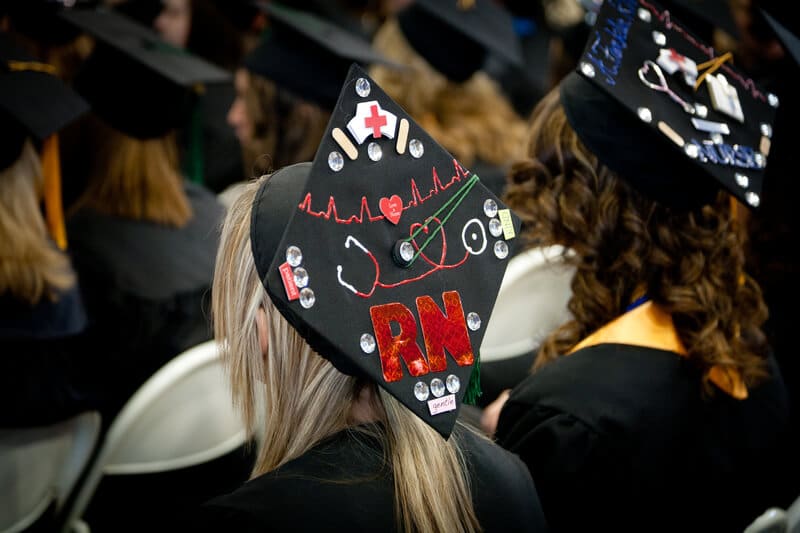
About a week ago, I was working from my local Panera Bread. Mostly I was trying to mind my own business and get a fairly large document written while enjoying some music and snacks. However, as I sat there, the table next to me started to fill up with about eight nursing students from one of the local universities. They were easy to spot in their branded scrubs proudly proclaiming they were part of the School of Nursing.
I sat for a few minutes wondering what they might know about the types of work that we do at DTA Healthcare Solutions, and if they’ve ever heard some of our key care practices or some of the Patient Experience “buzz phrases” in their schooling. Finally, I casually introduced myself (luckily with a 9-month baby bump, people are extra nice to you), explained some of the work that I do in Patient Experience, and then proceeded to ask them a few questions. It went a little like this:
Pamela: In school, have you guys learned anything about Patient Experience?
Student 1: Do you mean, like, are patient’s happy?
Pamela: Well, more than that. What about HCAHPS?
Student 2: What’s that?
I did a quick 2-minute Patient Experience crash course for them before their teacher arrived, but it struck me: who is responsible for teaching our future clinicians about Patient Experience? Should it be taught in schools? Should it be the responsibility of the hiring organization to educate new clinicians about Patient Experience? Who really has the skills to do this ever-growing industry of Patient Experience justice?
In thinking back on my interactions with many young nurses outside of a work setting, I often find myself asking the same types of questions. In May, at a family birthday party, a friend of the birthday girl had to leave early as her nursing shift started at 6 a.m. Throughout the course of the night though, I was able to ask her a few questions about her understanding related to Patient Experience. Like my new Panera friends, she also couldn’t tell me much but assured me that “we always write our names on the white boards”.
We do know that many med schools are incorporating more content into their curriculum and certainly some nursing programs have an emphasis on Patient Experience. But, by and large, the content is dwarfed by the volume of the other clinical information that they are required to learn.
With all of that said, how can we as Patient Experience professionals best equip hospitals, clinics, care centers, etc. to provide the best possible Patient Experience if their staffs have such a minimal baseline knowledge? Yes, it all starts with an effective New Employee Orientation—focusing on the culture of the organization and clearly outlining the measurement structure and expectations related to safe, and patient-centered care. However it has to extend beyond the initial orientation. We find that reinforcing those concepts after new staff have their “sea legs” and are established in their practice (approximately 6 months) is a great time to start Care Team Coaching. This process is strengths-based and therefore a positive, reaffirming approach that helps new providers know how they are doing in key aspects of communication with patients and their co-workers.
The bottom line is this: hospitals, clinics, and other healthcare organizations cannot rely solely on the formal education of its clinicians to bolster their patient-centered interactions. Perhaps it is time for a stronger focus on Patient Experience and government reporting in school, but until that happens, healthcare organizations will need to be the primary educator of new staff members related to the topic.
[Editor’s note: we don’t recommend interrupting a table full of people at Panera, or any other of the delightful fast-casual restaurant offerings out there, unless you happen to be Pamela]
